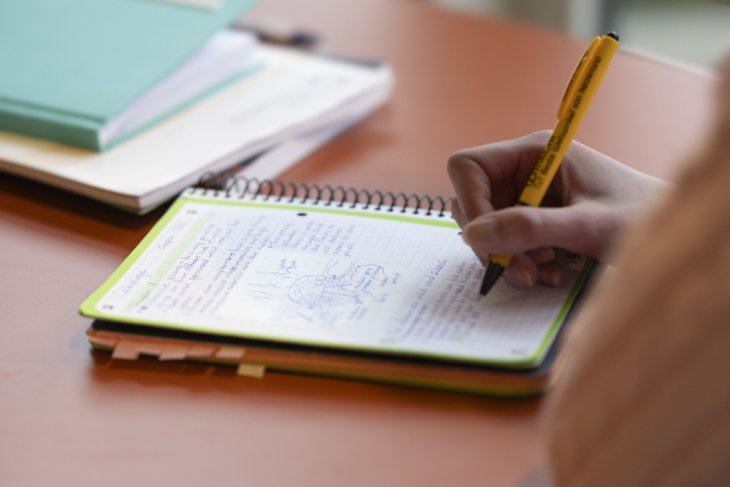Use your laptop
Starting with a controversial one – use your laptop. Yes, retention is better when you write down information on paper, we know, but the truth is: some teachers just pass on their information with a speed that travels faster than lightning. So, if you want to keep track of all important concepts explained, you sometimes don’t have a choice but to use your laptop. That doesn’t take away the fact that rewriting your notes as a way to prepare for an exam is a great study method, though 😉.
First braindump, then organise
If you’re looking to write proper notes that actually prove useful before an exam, it can be tempting to start organising them immediately after writing down your thoughts during a lecture. However, this also means you're wasting precious time, which you could also spend, you know, listening to your professor and trying to understand the material. Just make sure to write down all the important information during the lecture itself, and take 10 minutes after to clean up your notes and make them readable. Besides being able to keep your focus on the professor, this also gives you the chance to already take a second look at the material – future you will thank you during exam prep!
Identify the important stuff
Although some professors may make it seem like everything that’s being said during a lecture is super important for the exam, you really don’t need to remember every single anecdote. Of course, write down all important concepts, models and/or formulas, their relations, and any important and enlightening examples, but keep away from too many illustrative anecdotes.
That being said…
Listen to your professor
When your professor explicitly states that something is going to be on the exam, best believe it’s going to be. And even if it isn’t, chances are it’ll be on the retake exam. Although hopefully, with proper notes and the right preparation, you won’t need to take that one.
Use lists and headings
The last thing you want is for you to open your notes when preparing for an exam and being confronted with two or three pages of solid body text. Especially when you’re a social science student and your lectures are more text than formula-based, there will be a lot of text – and when we say a lot, we mean a lot. That’s why it’s important to reorganise your notes after your lecture, and add headings, subheadings, bullet lists or even some visual illustrations while you’re at it. Ever been at an exam and visibly remembered that one exact bullet list of theories you’ve studied on page two, paragraph three of your notes? That’s what this is going to help you do.
Write down your action points
Studying does not end after finishing a lecture – rather, it’s quite the opposite. That’s why it can help to write down your next steps as part of your notes. Your teacher mentions a specific chapter in your book that relates to the material that’s discussed? Write down to revise that chapter as an action point. Don’t quite get the gist of a concept yet, and is the professor too far in to still ask during the lecture? Write down an action point to step by their office with your question later. At the end of your document, create an overview of all action points mentioned throughout your notes. This way, you’ll have your own personal to-do list after each lecture that will help you get prepped for the upcoming exam.
Taking good notes is no more a talent than a skill. The more you practice, the better they get! Besides, just spending as little as 10 more minutes on your notes can really take them up to the next level, which will definitely come in handy during your next exam week. With these tips, you’re bound to make a good start. Good luck writing!




